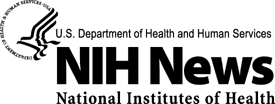 |
|
|
FOR IMMEDIATE RELEASE:
May 22, 2001 #01-12 22 May 2001: National Survey Examines Factors Related to High Levels of Dust Mite and Cockroach Allergen in BedsHigh levels of dust mite allergens (http://www.niehs.nih.gov/health/topics/conditions/asthma/dustmites.cfm) were found in bedding in 23 percent, or nearly a quarter, of homes sampled in the First National Survey of Lead and Allergies in Housing (http://www.niehs.nih.gov/health/topics/conditions/asthma/studies/riskassess/nslah.cfm). In addition, cockroach allergen (http://www.niehs.nih.gov/health/topics/conditions/asthma/cockroaches.cfm) was detectable in bedding of over 6% of homes. The national survey was conducted from July 1998 to August 1999 under the sponsorship of the U.S. Department of Housing and Urban Development (http://www.hud.gov) The survey results are being presented in a scientific poster session at the 97th International Conference of the American Thoracic Society (http://www.thoracic.org/sections/meetings-and-courses/international-conference/index.html) Sampling was done in 831 homes occupied by 2456 individuals in 75 different locations across of United States. In the survey, researchers collected vacuumed dust samples, environmental and demographic data, and health information from surveyed homes and their inhabitants. From their data, the researchers estimate that dust mite allergens at levels previously associated with asthma and allergy (http://www.niehs.nih.gov/health/topics/conditions/asthma/research.cfm) are present in approximately 23.2 million U.S. homes. Dust mites are very minute arachnids (related to spiders) that live primarily on flakes of human skin. Dust mite allergens are proteins which come from the digestive tract of mites and are found at high levels in mite feces. Since the mites are too small to be visible to the naked eye, they escape people's notice, but they are present to some degree in nearly all human habitations. The researchers found that a number of factors were significantly associated with increased risk for high dust mite allergen levels in the bed, including:
The researchers also estimate that cockroach allergens are present in approximately 6 million U.S. homes. The major factors associated with increased risk for high bed cockroach allergen levels were:
Lead author on the study Darryl C. Zeldin, M.D. said, "This study identifies important factors that are associated with increased exposure to indoor allergens. This information can be used to identify homes and individuals that are at greatest risk of exposure so that researchers can better target their prevention and intervention efforts." Though the research wasn't specifically focused on reducing indoor allergens, some steps might include frequent and rigorous cleaning of bedding, use of allergen barriers on mattresses and pillows, controlling moisture indoors with the use of dehumidifiers, moisture barriers and moisture proofing of foundations, and eliminating sources of food debris. The NIEHS Asthma Website (http://www.niehs.nih.gov/health/topics/conditions/asthma/index.cfm) has more information on how to reduce allergen levels in the home. * * * Authors on the studies with Dr. Zeldin were Drs. P.J. Vojta, NIEHS; W. Friedman and J. Zhou, OLHC/HUD; E. Schuett and R. Cohn, ASI/RTP; H. Burge and M. Muilenberg, Harvard University (http://www.harvard.edu/) Dr. Zeldin can be reached during the ALA/ATS meeting in San Francisco at the Stanyan Park Hotel (http://www.stanyanpark.com/) |
|


